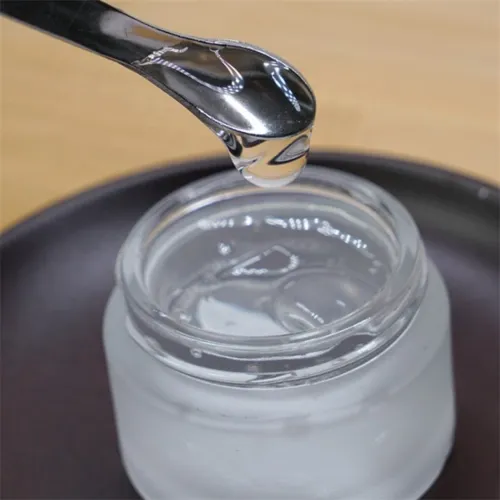
Understanding the Different Types of Cellulose
Cellulose is a naturally occurring polymer found in the cell walls of plants. As one of the most abundant organic compounds on Earth, it plays a significant role not only in nature but also in various industrial and commercial applications. From construction materials to food additives and packaging solutions, different types of cellulose offer diverse benefits and properties.

This article explores the different types of cellulose, their unique characteristics, applications, and relevance in modern industries.
1. Exploring the Different Types of Cellulose and Their Properties
Cellulose exists in various forms, each with specific uses across industries:
Microcrystalline Cellulose – A refined, partially depolymerized cellulose commonly used in food and pharmaceutical products as a stabilizer, anti-caking agent, and texturizer.
Carboxymethylcellulose – Known for its thickening, stabilizing, and water-retention properties, it is widely used in detergents, paints, and food formulations.
Methyl Cellulose – A cellulose derivative that forms gels upon heating and is used in construction materials, food, and pharmaceuticals.
Hydroxyethyl Cellulose – This water-soluble polymer is valued in paints, cosmetics, and adhesives. Many businesses source it from hydroxyethyl cellulose suppliers to ensure consistent quality.
Hydroxypropyl Cellulose – Often used in coatings and films due to its flexibility and film-forming properties.
Sodium Carboxymethyl Cellulose – A salt form of carboxymethyl cellulose with excellent water solubility, commonly used in personal care and food products.
Ethyl Cellulose – An important cellulose derivative for controlled-release drug formulations, coatings, and inks.
Microfibrillated Cellulose – A high-strength material used in composites, paper, and packaging.
Polyanionic Cellulose – Known for its performance in drilling fluids, especially in oil and gas applications.
Each of these different types of cellulose is chosen for its specific properties, such as solubility, viscosity, and film-forming capabilities.

2. Cellulose in Packaging, Construction, and Specialty Applications
The uses of cellulose extend beyond food and pharmaceutical products into industrial and environmental solutions.
Cellulose Packaging
As sustainability becomes a priority, cellulose packaging has gained attention for being biodegradable and eco-friendly. This packaging material offers strength and flexibility while minimizing environmental impact.
Cellulose Fiber
Cellulose fiber is a versatile material used in textiles, insulation, and paper manufacturing. The cellulose fiber price depends on fiber type, quality, and intended use. It provides durability, moisture absorption, and comfort in clothing applications.
Cellulose Acetate
Cellulose acetate is a thermoplastic polymer used in eyeglass frames, photographic films, and cigarette filters. Cellulose acetate use has expanded into biodegradable plastics and luxury fashion accessories.
Cellulose Sanding Sealer
In woodworking, cellulose sanding sealer offers a smooth, sealed surface for finishing, helping to enhance the appearance and durability of wood products.
Cellulose Tape
Cellulose tape is biodegradable, making it a sustainable alternative to traditional plastic adhesive tapes. It is widely used in packaging and labeling.
3. The Growing Demand for Cellulose in Modern Industries
From personal care to heavy industry, cellulose derivatives are indispensable. For example:
The construction industry relies on methyl cellulose, hydroxyethyl cellulose, Und Carboxymethylcellulose for cement modification and tile adhesives.
The oil and gas sector utilizes polyanionic cellulose to stabilize drilling fluids.
Packaging companies increasingly turn to cellulose packaging Und cellulose tape for eco-friendly solutions.
The pharmaceutical industry demands ethyl cellulose Und mikrokristalline Cellulose for controlled drug delivery and tablet formulation.
Global supply chains are adapting to meet these demands, with hydroxyethyl cellulose suppliers expanding production to support industries ranging from cosmetics to coatings.
Cellulose and its derivatives have become integral to countless industries, offering renewable, versatile, and high-performance solutions. Whether it’s cellulose fiber for textiles, cellulose acetate for bioplastics, or mikrokristalline Cellulose for pharmaceuticals, the diversity of applications continues to grow. As sustainability concerns rise, innovations in cellulose packaging, cellulose tape, Und microfibrillated cellulose will help meet eco-friendly goals while delivering performance and reliability.
FAQ About Different Types of Cellulose and Their Applications
What are the different types of cellulose used in industries?
Common types include mikrokristalline Cellulose, Carboxymethylcellulose, methyl cellulose, hydroxyethyl cellulose, hydroxypropyl cellulose, sodium carboxymethyl cellulose, ethyl cellulose, microfibrillated cellulose, Und polyanionic cellulose.
What is the main use of microcrystalline cellulose?
Microcrystalline celluloseis primarily used in pharmaceuticals as a binder and filler in tablets, as well as in food products as a stabilizer and anti-caking agent.
Why is cellulose packaging considered eco-friendly?
Cellulose packagingis biodegradable, renewable, and compostable, making it an excellent alternative to plastic packaging while maintaining durability.
Where can I find hydroxyethyl cellulose suppliers?
Hydroxyethyl cellulose supplierscan be found globally, with many specializing in industrial-grade materials for paints, cosmetics, adhesives, and construction products.
What is the cellulose fiber price range?
The cellulose fiber pricevaries depending on quality, source, and intended application, typically ranging from affordable industrial grades to higher-priced specialty fibers.
-
Hydroxypropyl Starch as a Sustainable Construction AdditiveNewsNov.24,2025
-
The Gelation Properties of CMCNewsNov.21,2025
-
Redispersible Latex Powder and Water Retention CapacityNewsNov.21,2025
-
Dosage Control for Polycarboxylate Water ReducerNewsNov.21,2025
-
Film-Forming Properties of Polyvinyl AlcoholNewsNov.21,2025
-
The Function of Gypsum Additives in MortarNewsNov.21,2025





















